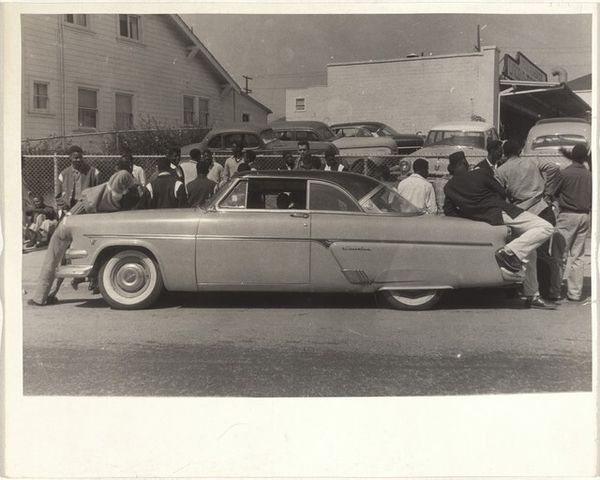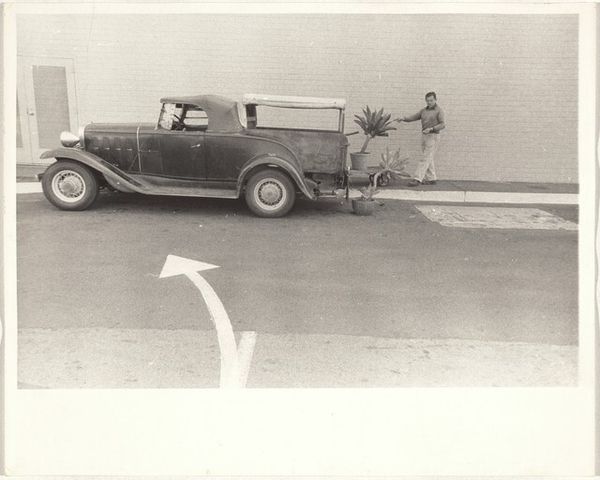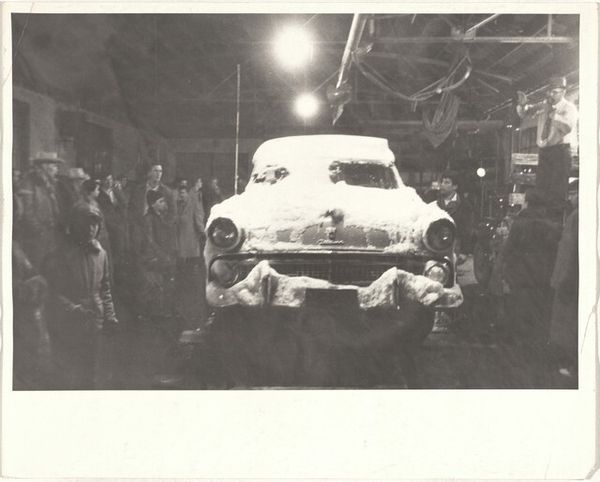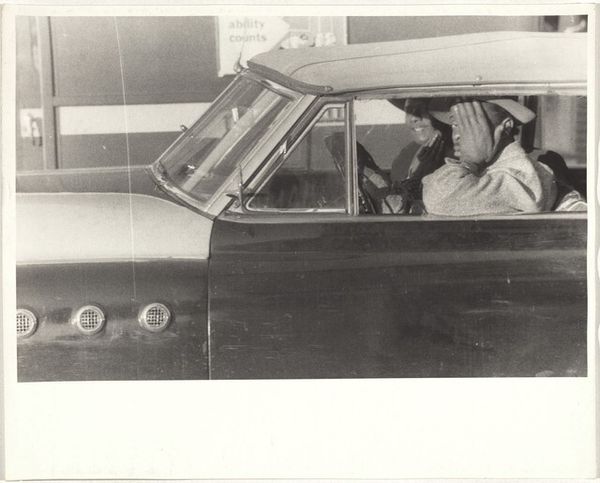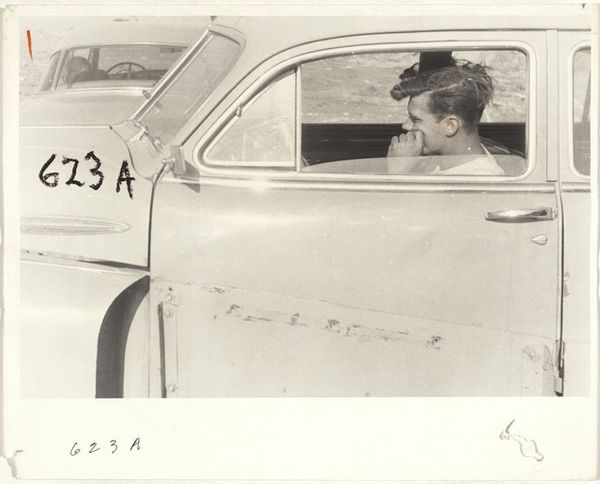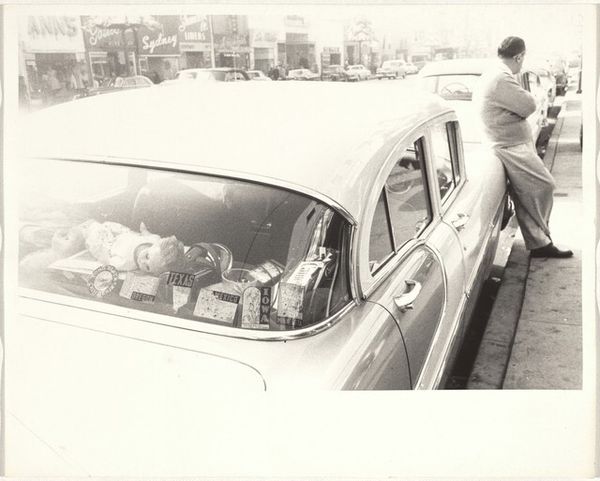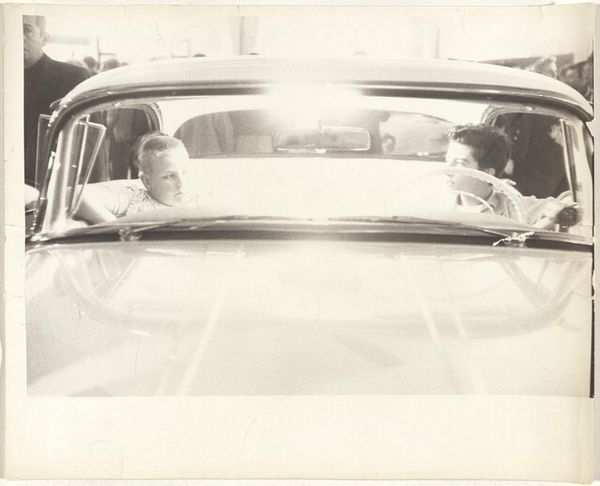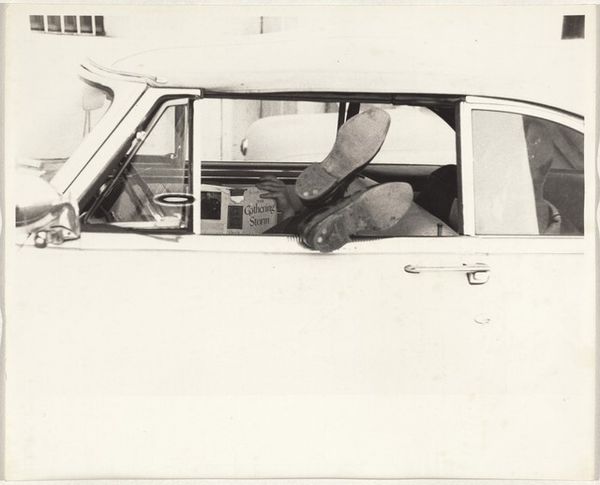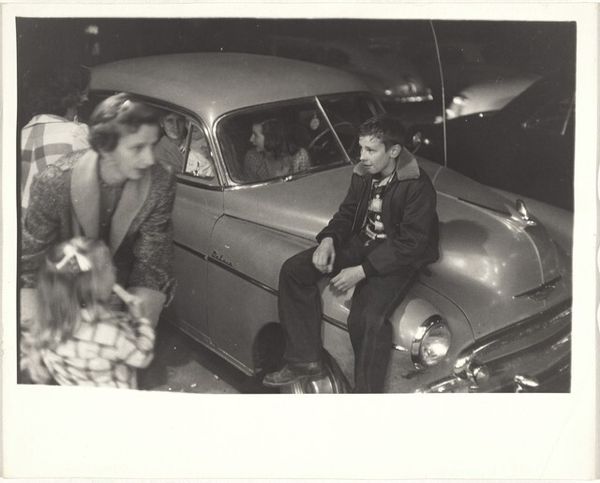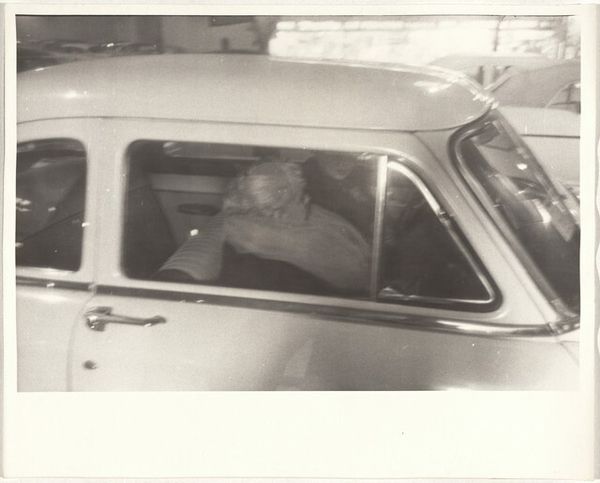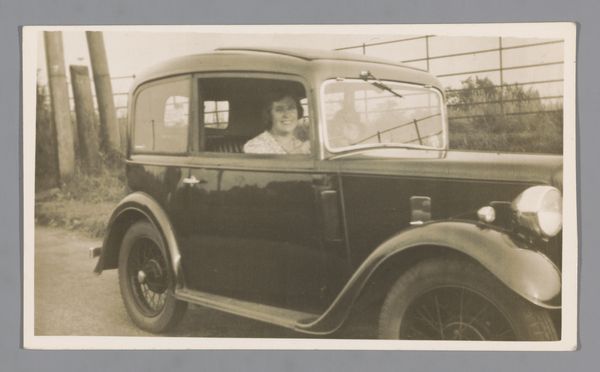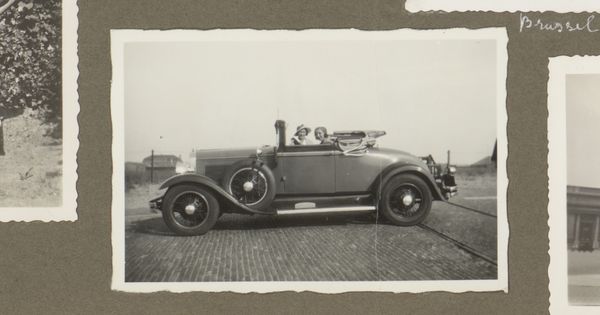
Dimensions: sheet: 20.3 x 25.2 cm (8 x 9 15/16 in.)
Copyright: National Gallery of Art: CC0 1.0
Curator: This is Robert Frank's "Auto race--Los Angeles," a gelatin silver print from 1956. What strikes you about it initially? Editor: There's an attitude here, a palpable feeling of defiance and boredom, almost. It feels very "outsider," somehow both intimate and detached at the same time. Curator: Well, think about the conditions of its making. Frank, a Swiss émigré, travels across a very segregated United States and tries to show us the everyday experience of 1950s America, in an age of mass consumption and manufacturing growth after the War. This is very much a social and political document of the time. We get glimpses of consumer culture with the automobiles in the backdrop. But what kind of access to capital are people afforded here, considering issues of race and class at the time? The image refuses a simplistic, celebratory tone. Editor: I'm curious about the materiality of the print itself. It looks like a quickly made object. Was the silver gelatin process one that was readily available, easily reproducible at the time? What was its social role as a way to transmit photographic imagery? Curator: Exactly, and its accessibility played into Frank's wider project. The "snapshot aesthetic," some called it. The imperfections, the graininess – it's all deliberately chosen to represent what he calls the “visual impact” of American culture in contrast to pretty, commercial images, made possible with advances in cheaper photographic technology for widespread use. Look at the contrasts in light, creating distinct visual rhythms between the dark clothing, bright car, and muted backgrounds. It's a radical break from traditional, technically polished photography. He wanted to capture the immediate realities, not fabricate perfect compositions. Editor: Absolutely, and the group on top of the car—their stances suggest an almost theatrical defiance, as if they're staging a silent rebellion against societal expectations of the American dream, or male power. Their youthfulness, framed against this potent symbol of freedom—the car—creates a fascinating tension, questioning whose freedom is prioritized, and at whose expense, and made possible with technological advancements, from auto manufacturing to photography printing and development. Curator: Indeed. It's an important commentary on a rapidly changing society. Frank gave us a crucial look behind the curtain, using his unique process to amplify a sense of social unease and a nuanced portrait of post-war America. Editor: For me, it really is an arresting piece of commentary because it makes me think about power, identity, labor, and the consumption of media during a very specific intersection in United States history. The banality of its imagery confronts viewers on its account of race, gender, class, and historical positioning to expose an era still ripe for deconstruction.
Comments
No comments
Be the first to comment and join the conversation on the ultimate creative platform.

